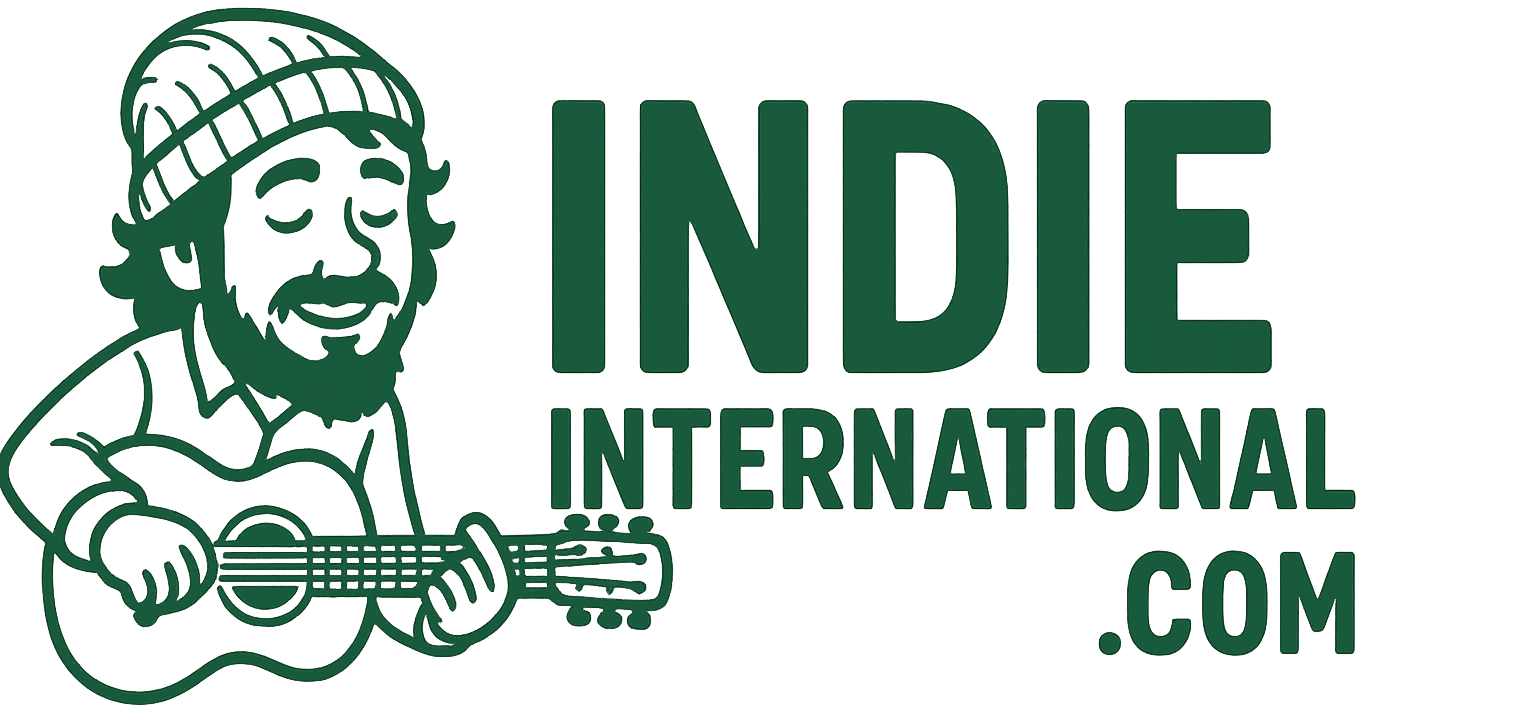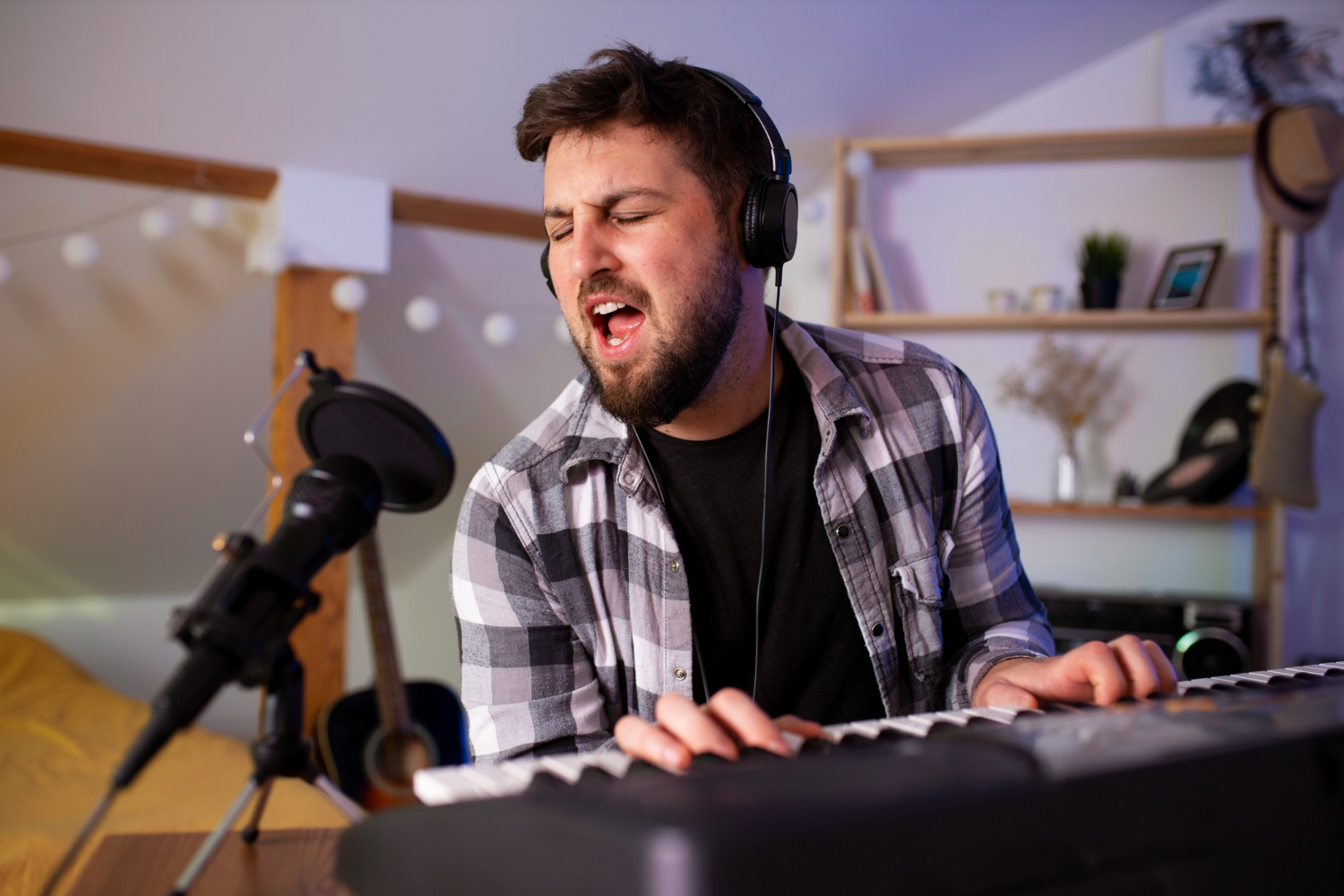Many musicians treat their DAW like a fancy tape recorder. They press record, capture a performance, and call it a day. But a digital audio workstation can be much more than a tool for capturing sound , it can be a fully integrated creative partner in the songwriting process. By shifting how we use it, a DAW can help us develop melodies, explore arrangements, and even refine lyrics before a single microphone is set up.
I’ve found that when I treat my DAW as part of The Songwriter’s Toolbox rather than just a production tool, I end up writing more efficiently and with greater flexibility. It allows me to experiment, make quick adjustments, and hear ideas in context without waiting for a full studio session. The possibilities are much bigger than simply hitting record.
Laying Down Scratch Tracks
One of the most effective ways to use a DAW for songwriting is to create quick scratch tracks. Instead of obsessing over perfect tone or flawless performance, I focus on getting the idea down as quickly as possible. This could be a basic chord progression, a vocal melody hummed into a mic, or a looped rhythm to set the groove.
The benefit of scratch tracks is that they give me something tangible to build on. I can loop sections, test different melodies, and even rearrange song sections with just a few clicks. The DAW becomes a sketchpad for ideas instead of a pressure-filled recording booth.
Building Song Structures in Real Time
When I used to write only on guitar or piano, figuring out the structure of a song could feel like a guessing game. With a DAW, I can build the structure visually. I’ll lay down verse, chorus, and bridge sections, then shuffle them around to see what flows best.
This kind of nonlinear songwriting gives me freedom to explore unconventional forms. I can test whether the song feels stronger starting with the chorus, or if adding a pre-chorus makes the transition smoother. Seeing the arrangement mapped out helps me think like a producer while I’m still in the writing stage.
Experimenting With Virtual Instruments
Even if I’m writing primarily for guitar, I often load up virtual instruments to explore different sonic possibilities. Maybe the song would benefit from a piano-driven intro or a synth bass instead of a traditional bass guitar.
Virtual instruments open doors to sounds I don’t play physically. I might not be a violinist, but I can still experiment with string arrangements to see how they influence the song’s emotional tone. These experiments often lead to surprising creative breakthroughs.
Creating Dynamic Demos
A DAW makes it possible to create demos that feel almost like finished tracks, which can be especially helpful for collaborators. Instead of sending a rough voice memo, I can send a layered arrangement with placeholder drums, bass, and harmonies.
These more polished demos not only make the song easier for others to interpret but also help me hear it as the listener will. If a chorus feels flat in the demo, it’s a sign I may need to rework the melody or add dynamic contrast.
Using MIDI for Flexible Songwriting
One of my favorite DAW features for songwriting is MIDI editing. I can record a simple piano part, then change the key, tempo, or instrumentation instantly without re-recording. This is incredibly useful when I’m trying to find the right feel for a song.
If a melody feels too bright in C major, I can drop it to A minor and see how it changes the mood. This kind of quick experimentation is almost impossible in an analog-only workflow, and it keeps the creative process fluid.
Looping for Idea Development
Looping short sections is another songwriting superpower in a DAW. I can loop a four-bar chord progression and improvise melodies over it for as long as I want, capturing the best moments.
This method often helps me push past predictable ideas. After the first few takes, I naturally start trying different rhythmic patterns, phrasing, and note choices , sometimes landing on a hook I would have never found otherwise.
Integrating Lyrics Into the Session
It’s easy to think of a DAW as purely an audio tool, but I often keep my lyrics inside the session as well. Many DAWs have text note features, and I use them to jot down lyric ideas directly alongside the music.
Having the words in the same space as the music makes it easier to match syllable counts, adjust phrasing, and test lines against the melody in real time. It also keeps me from losing track of lyric changes as I refine the song.
Layering Harmonies and Counter-Melodies
During songwriting, I like to experiment with harmonies long before I commit to final vocals. In the DAW, I can quickly duplicate my main melody track, shift the pitch, and test different harmonies without spending hours re-recording.
Sometimes I’ll try a counter-melody instead, which can add a whole new dimension to a section. Hearing these ideas in context helps me decide whether to keep them, modify them, or scrap them entirely before moving into serious recording.
Sound Design as a Songwriting Tool
Even though I’m focused on writing, not producing, I sometimes use sound design to inspire new ideas. A simple melody played on a standard piano patch might feel bland, but switching to a dreamy pad or plucky synth can instantly give it a new character.
This doesn’t mean I get lost in endless tweaking , the goal is to find textures that spark creative choices in melody, rhythm, and arrangement. The DAW makes this process fast and reversible.
Collaboration Made Easy
When co-writing, a DAW session becomes a shared canvas. I can send a project file to a collaborator, and they can add their own parts or rearrange sections without losing the original idea.
This kind of digital back-and-forth is far more efficient than trading separate audio files or trying to describe changes in an email. It also keeps the song’s development organized and transparent for everyone involved.
Using Templates to Speed Up Writing
One thing that transformed my DAW workflow was creating songwriting-specific templates. These templates include a few basic instrument tracks, a drum loop, and common effects I like to use.
Starting from a template means I can begin writing immediately instead of wasting time setting up. It’s part of why I now consider my DAW a central part of The Songwriter’s Toolbox , it’s always ready to catch an idea the moment it arrives.
Organizing Ideas Within the DAW
Over time, a DAW can become a huge library of half-finished songs and unused riffs. I’ve learned to keep everything labeled clearly with descriptive titles, BPM, and key. I also color-code sections and group related tracks together.
This organization makes it much easier to revisit old ideas. Sometimes a riff from last year becomes the missing piece for a new song, and finding it quickly is only possible if I’ve kept my session files tidy.
Combining Old and New Ideas
One of the hidden strengths of using a DAW for songwriting is how easy it is to combine ideas from different projects. I might import a bridge from one session into another to see how it fits, or test a chorus I wrote months ago with a brand-new verse.
This kind of creative recycling often leads to unexpected combinations that work better than I’d imagined.
Treating the DAW as a Creative Partner
The biggest shift in mindset came when I stopped thinking of my DAW as just a recorder and started treating it as part of my creative process. Now, it’s where I brainstorm, sketch, refine, and sometimes even finalize songs before stepping into a proper studio.
It’s not about replacing instruments or traditional writing methods, but about expanding them. The DAW gives me tools that complement my natural workflow and make my ideas easier to shape and share.
Final Thoughts
Using a DAW purely for recording is like owning a full workshop and only using the hammer. By integrating it into the writing process, I’ve unlocked new ways to explore melody, arrangement, and texture without waiting for perfect conditions.
The Songwriter’s Toolbox isn’t complete without a DAW used to its full potential. Whether it’s capturing quick scratch ideas, experimenting with harmonies, or building dynamic demos, the DAW can make songwriting more flexible, collaborative, and exciting. The more I treat it as an instrument in its own right, the more songs I finish , and the better those songs turn out.

